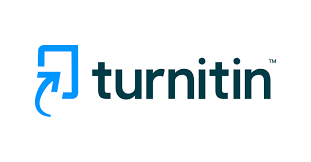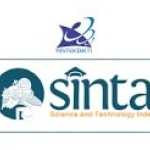PERBANDINGAN TINGKAT KUALITAS PRODUK SAYURAN PADA PASAR TRADISIONAL DAN PASAR MODERN DI NGALIYAN KOTA SEMARANG DALAM PERSPEKTIF BIOLOGI
Abstract
Vegetables are an important source of nutrients in the fulfillment of essential nutrients for human health. The selection of quality vegetables is the main key in ensuring maximum nutritional benefits. Traditional markets and modern markets offer different approaches to quality including freshness, nutritional composition, price, shelf life and safety in confectionery. Therefore, this study aims to compare the quality of vegetables in traditional markets and modern markets by considering biological factors such as surface texture, color, freshness, and integrity of the selected vegetable samples. The research method used is a qualitative descriptive method consisting of identifying issues and objectives, collecting data, analyzing, and formulating concepts. Data collection by taking samples from one of the populations as the main data collection tool to compare the quality of vegetables in traditional markets with modern markets in Ngaliyan District, Semarang City from a biological perspective. In this study the samples used in the study were taken from five different types of vegetables, namely tomatoes, carrots, pakcoy, potatoes, and leeks. The results showed that the comparison of the quality of vegetables owned by traditional markets tends to be fresher and has a higher nutritional content compared to Superindo Modern Market. This is due to the harvesting process that is closer to the time of sale in traditional markets, so that the nutrients in vegetables are still well preserved. On the other hand, vegetables sold in Superindo Modern Market often undergo a longer preservation and transportation process, so that their nutritional content can be reduced.
Keywords
Full Text:
PDFReferences
Kusnadi, J. (2018). Pengawet Alami Untuk Makanan. Malang: UB Press.
Wahyudin, W. (2019). Pengaruh Persepsi Konsumen Mengenai Harga, Lokasi, Dan Kualitas Pasar Terhadap Minat Beli Konsumen Di Pasar Pon Purwokerto. Jurnal Pendidikan Dan Ekonomi, 8(2), 142-149.
BSN. (2016). Sistem Pertanian Organik. Jakarta: BSN.
Khaeruman, K., & Hanafiah, H. (2019). Perbandingan kualitas produk sayur dan buah pada pasar tradisional dan pasar modern di Kota Serang dalam penerapan strategi pemasaran. Majalah Ilmiah Bijak, 16(2), 110-120.
Jafarzadeh, S., Nafchi, A. M., Salehabadi, A., Oladzad-Abbasabadi, N., & Jafari, S. M. (2021). Application of bio-nanocomposite films and edible coatings for extending the shelf life of fresh fruits and vegetables. Advances in Colloid and Interface Science, 291, 102405.
Kocira, A., Kozłowicz, K., Panasiewicz, K., Staniak, M., Szpunar-Krok, E., & Hortyńska, P. (2021). Polysaccharides as edible films and coatings: Characteristics and influence on fruit and vegetable quality—A review. Agronomy, 11(5), 813.
Cholvistaria, M., Widowati, H., & Sutanto, dan A. (2021). Hubungan Penurunan Vitamin C Sayuran Hiperakumulator Dengan Residu Zat Aktif Insektisida Fipronil Relationship Of Decreasing Hyperaccumulator Vegetable Vitamin C With Fipronil Insecticide Active Substance Residue. 21(3), 242–250.
Ngete, A. F., & Rara, I. M. F. (2020). Penggunaan pewarna alami sebagai upaya meningkatkan kualitas kesehatan. Jurnal Kesehatan Tujuh Belas, 1(2), 130–135.
Iriyani, D., & Nugrahani, P. (2017). Komparasi Nilai Gizi Sayuran Organik Dan Non Organik Pada Budidaya Pertanian Perkotaan Di Surabaya. Jurnal Matematika Sains Dan Teknologi, 18(1), 36–43.https://doi.org/10.33830/jmst.v18i1.173.2017.
Elfariyanti. (2022). Identifikasi Betakaroten Pada Sayuran Berwarna Hijau. Jurnal Sains Dan Kesehatan Darussalam, 2(1), 10–15. https://doi.org/10.56690/jskd.v2i1. 38
Moehji, S. 2017. Dasar-dasar Ilmu Gizi 1. Pustaka Kemang: Jakarta.
Garcia, A. L., et al. (2019). Nutrient Content of Organic and Conventional Retail Vegetables in Germany. European Journal of Nutrition, 58(2), 765-774.
Mie, A., et al. (2017). Human Health Implications of Organic Food and Organic Agriculture: A Comprehensive Review. Environmental Health, 16(1), 111.
Smith, J. D. (2018). Impact of Agricultural Practices on Nutritional Quality and Safety of Produce. Annual Review of Food Science and Technology, 9, 1-18.
Smith-Spangler, C., Brandeau, ML, Hunter, GE, Bavinger, C., Pearson, M., dkk, 2012. Apakah makanan organik lebih aman atau sehat dibandingkan alternatif konvensional?: Tinjauan sistemik. Ann. Magang, medis. 157, 348-366.
Reeve, JR, Hoagland, LA, Villalba, JJ, Carr, PM, tucha, A., dkk, 2016. Pertanian organik, kesehatan tanah, dan kualitas pangan: mempertimbangkan kemungkinan kaitannya. Adv. Agronoml 137,310-387.
Zhu, N., et al. (2020). Genetic Diversity and Population Structure of Chinese Cabbage (Brassica Rapa Subsp. Pekinensis) in China. Frontiers in Genetics, 10, 989.
Oluwole, O. B., et al. (2017). Pesticide Residues in Fruits and Vegetables from Ibadan, Nigeria. Food Additives & Contaminants: Part B, 10(4), 250-257.
Popp, József, Károly Pető, and János Nagy. 2013. “Pesticide Productivity and Food Security. A Review.” Agronomy for Sustainable Development 33(1): 243–55.
Saillenfalt. AM, Ndiaye, D., Sabate, JP. 2015. Piretroid: paparan dan efek kesehatan-pembaruan. Int. J.Hyg. Mengepung. Kesehatan 218, 281-292.
Mayers, JP, Antoniou, MN, Blumberg, B., Carroll, L., Colborn, T., dkk., 2016. Kekhawatiran atas penggunaan herbisida berbasis glifosat dan risiko yang terkait dengan paparan: pernyataan konsensus. Mengepung. Kesehatan 15, 19.
Talhaoui, N., Taamalli, A., Gómez-Caravaca, AM, Fernández-Gutiérrez, A, Segura- Carretero, A., 2015 Senyawa fenolik dalam daun zaitun: Penentuan analitis, pengaruh biotik dan abiotik, dan manfaat kesehatan. Res Makanan. Int. 77, 92-108.
Hamidah, Siti. 2015. “Sayuran Dan Buah Serta Manfaat Bagi Kesehata Disampaikan Dalam Pengajian Jamaah Langar Mafaza Kotagede Yogyakarta.” : 1–10.
Satria, A. D. (2021). Makanan Halal Perspektif Majlis Ulama Indonesia (Mui) Di Kota Palangka Raya. Profetika: Jurnal Studi Islam, 22(2).
Mutiara Nugraheni. 2014. Kemasan Pangan. Plantaria: Yogyakarta.
Kocira, A., Kozłowicz, K., Panasiewicz, K., Staniak, M., Szpunar-Krok, E., & Hortyńska, P. (2021). Polysaccharides as edible films and coatings: Characteristics and influence on fruit and vegetable quality—A review. Agronomy, 11(5), 813.
Wertheim-Heck, S., Raneri, J. E., & Oosterveer, P. (2019). Food safety and nutrition for low-income urbanites: exploring a social justice dilemma in consumption policy. Environment and Urbanization, 31(2), 397-420.
Mieszczakowska-Frąc, M., Celejewska, K., & Płocharski, W. (2021). Impact of innovative technologies on the content of vitamin C and its bioavailability from processed fruit and vegetable products. Antioxidants, 10(1), 54.
DOI: https://doi.org/10.29103/ag.v8i2.13476
 Article Metrics
Article Metrics
 Abstract Views : 251 times
Abstract Views : 251 times
Refbacks
- There are currently no refbacks.
Copyright (c) 2024 Malika Allfathania Pradjasasmitha, Nikmatul Udzmah, Septia Dwi Saputri, Mirtaati Naima, Ahmad Fauzan Hidayatullah

.png)







